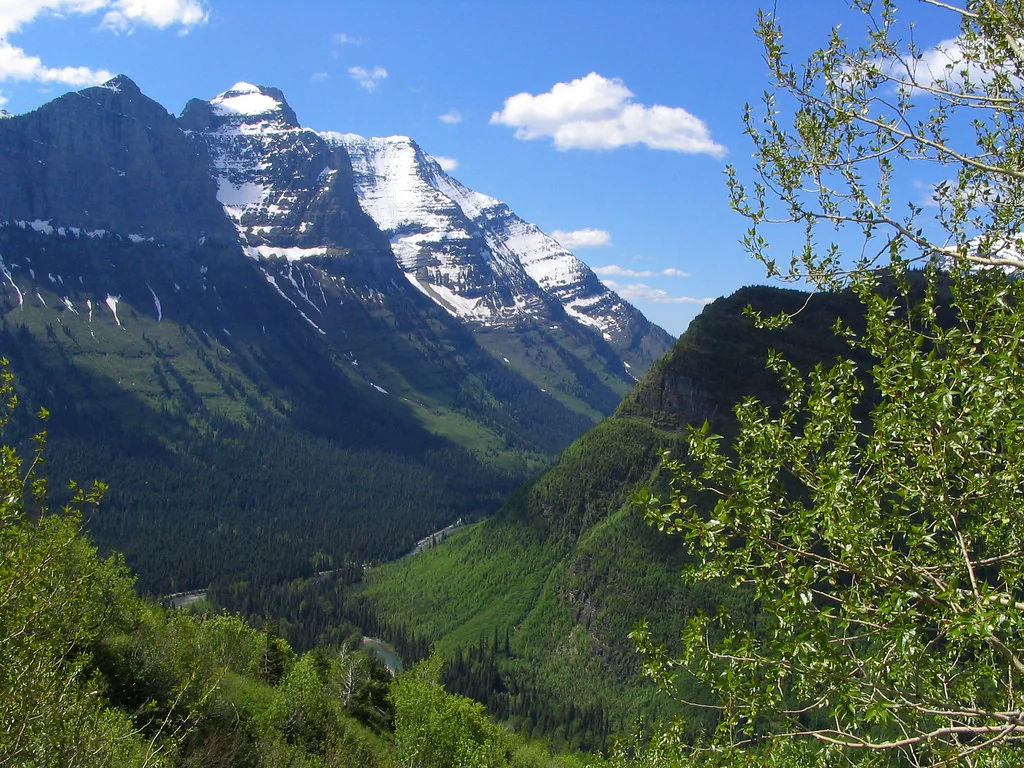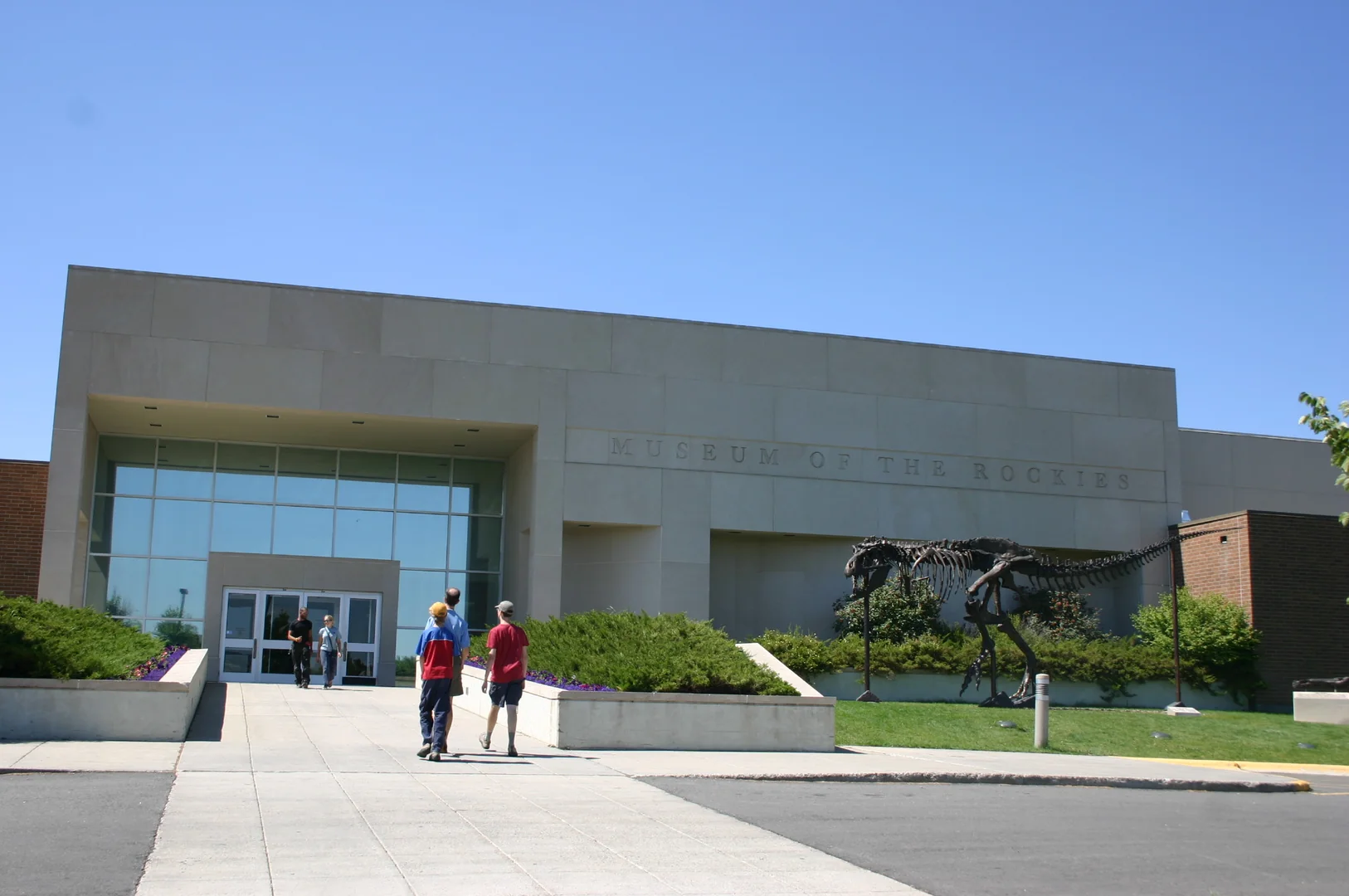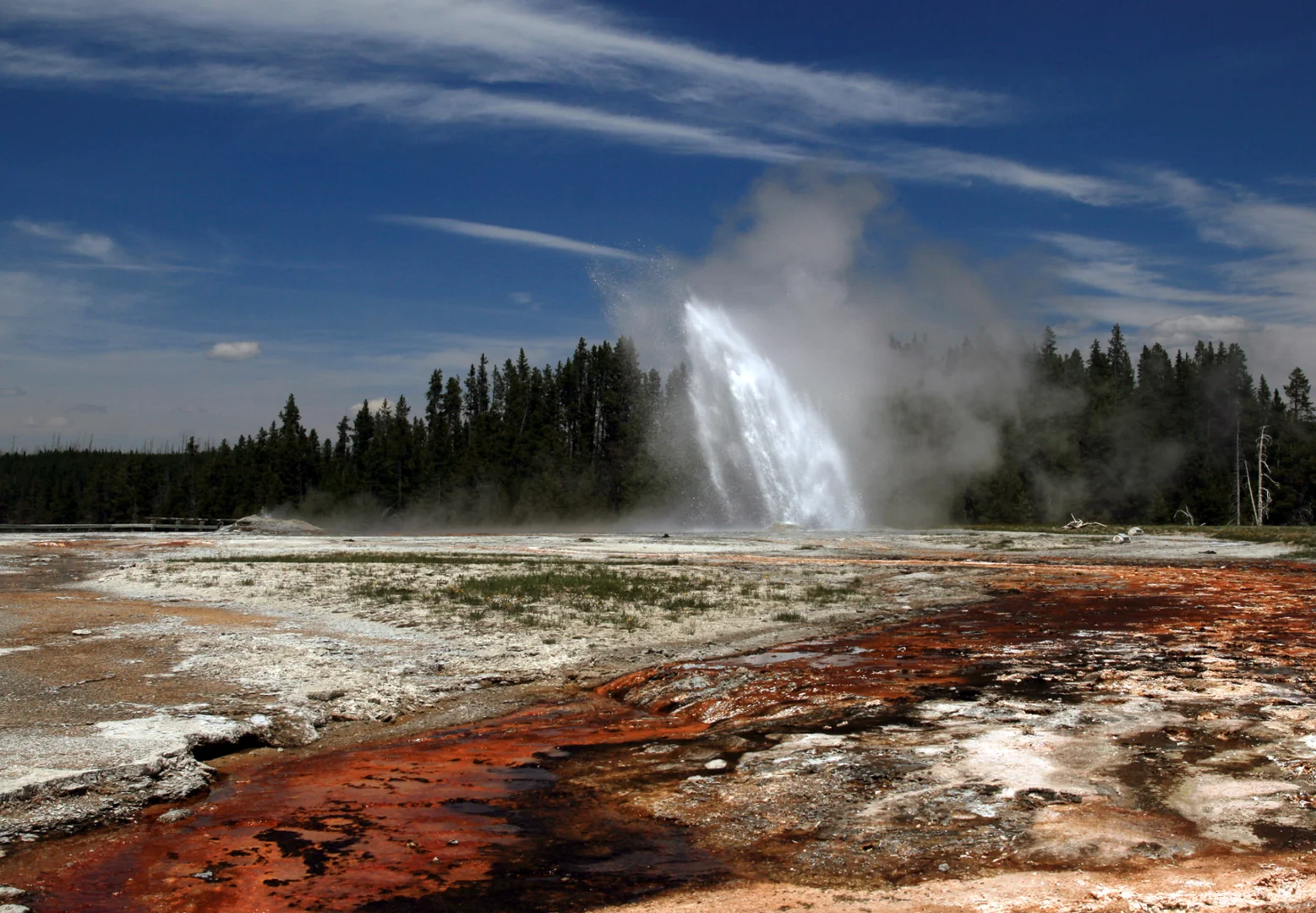3 Must-Do Montana Vacation Activities for Families with Kids: Glacier National Park, Museum of the Rockies, and Yellowstone National Park
Montana delivers something magical for families: a landscape where children can witness nature's grandest spectacles while parents rediscover their own sense of

Montana delivers something magical for families: a landscape where children can witness nature's grandest spectacles while parents rediscover their own sense of wonder. The state sits at the intersection of adventure and education, offering experiences that satisfy curious toddlers and restless teenagers alike.
Your family vacation here centers around three powerhouse destinations that each serve different aspects of discovery. You'll find yourself switching between examining fossilized dinosaur bones in world-class museum exhibits, watching geysers shoot steam hundreds of feet into the air, and hiking through pristine wilderness where mountain goats navigate cliff faces with ease.
The beauty of a Montana family trip lies in its variety. One day might start with your kids pressing their noses against museum display cases, studying massive Triceratops skulls. The next could find them peering through binoculars at a grizzly bear fishing for salmon, or walking carefully around bubbling hot springs that paint the earth in impossible colors.
Most families discover that Montana's attractions work better together than separately. The educational foundation built at the Museum of the Rockies enriches what children observe in the national parks, while the outdoor adventures make museum learning feel immediately relevant and exciting.
Glacier National Park - Going-to-the-Sun Road and Kid-Friendly Trails
The Going-to-the-Sun Road represents one of America's most spectacular mountain drives, but for families, it offers much more than scenic views. This 50-mile engineering marvel creates multiple opportunities to stop, explore, and engage children with the landscape at their own pace.
Start your Glacier adventure early in the morning at the Apgar Visitor Center, where junior ranger programs help children understand what they're about to experience. The visitor center's exhibits explain the park's formation through glacial activity in terms that make sense to young minds. Rangers distribute junior ranger booklets that transform the drive into an interactive scavenger hunt.
The road itself becomes an attraction as it winds through different ecosystems. Children watch the landscape change from dense forests to alpine meadows to rocky peaks, often within minutes. Plan for frequent stops at pullouts where families can safely exit vehicles and take short walks to viewpoints.
Trail of the Cedars provides the perfect introduction to Glacier's hiking opportunities for families with children of all ages. This wheelchair-accessible boardwalk trail stretches less than a mile through an ancient cedar forest, with interpretive signs that help children identify different tree species and understand forest ecosystems. The trail crosses Avalanche Creek on a suspension bridge that thrills kids while providing spectacular views of rushing water carving through red rock.
Hidden Lake Overlook represents a more ambitious family hike that rewards effort with unforgettable views. The 2.8-mile round-trip trail starts at Logan Pass and climbs gradually through alpine meadows filled with wildflowers during summer months. Children often spot mountain goats, marmots, and ground squirrels along this trail. The stunning vista from the overlook, where families can see Hidden Lake nestled between towering peaks, creates those vacation moments that children remember for decades.
Wildlife viewing opportunities abound throughout Glacier, but families find the most success along Going-to-the-Sun Road during early morning and evening hours. Black bears, mountain goats, bighorn sheep, and deer frequently appear near the roadway. Keep binoculars handy and maintain safe distances from all wildlife – the park requires visitors to stay at least 25 yards from most animals and 100 yards from bears and mountain lions.
The visitor centers at Apgar, Logan Pass, and St. Mary offer different educational programs throughout the day. Children particularly enjoy the evening ranger talks that often include stories about the park's wildlife and geological history. These programs help families understand the significance of what they're observing during their park exploration.
Weather considerations become crucial for families visiting Glacier. The full Going-to-the-Sun Road typically opens completely between late June and early October, depending on snow conditions. However, families can access portions of the park and many trails even when the high alpine section remains closed. Check current road conditions before arriving, and pack layers for children since mountain weather changes quickly.
Museum of the Rockies - Dinosaur Exhibits and Planetarium
The Museum of the Rockies in Bozeman houses one of the world's most impressive dinosaur collections, but its approach to presenting these ancient creatures specifically engages children through hands-on interaction and immersive experiences. The museum's paleontology exhibits don't just display fossils behind glass – they invite children to understand how these creatures lived, moved, and interacted with their environment.
The Siebecker Dinosaur Complex serves as the museum's crown jewel, featuring complete skeletons of Tyrannosaurus Rex, Triceratops, and other species discovered in Montana's fossil-rich landscapes. What sets this collection apart for families is the museum's commitment to showing dinosaurs as living animals rather than static displays. Interactive exhibits allow children to feel fossilized dinosaur skin impressions, examine coprolites (fossilized dinosaur droppings), and understand how paleontologists piece together information about dinosaur behavior from fossil evidence.
Children gravitate toward the museum's dig simulation area, where they can experience archaeological techniques firsthand. Using brushes and tools, kids carefully uncover replica fossils buried in sand, learning patience and observation skills while understanding how real paleontologists work. This hands-on experience often proves more memorable than viewing the actual fossils, as children gain appreciation for the meticulous work required to bring these ancient creatures back to light.
The Taylor Planetarium complements the museum's earthbound exhibits by expanding children's perspective to cosmic scales. The planetarium's dome creates an immersive environment where families can explore star formations, planetary movements, and the relationship between Earth and space. Shows specifically designed for younger audiences use storytelling and familiar characters to explain astronomical concepts, while programs for older children and adults delve deeper into current space exploration and astrophysics research.
Live demonstrations throughout the museum engage different learning styles and age groups. The paleontology lab, visible through large windows, allows families to watch scientists preparing real fossils for study and display. Children often spend extended time here, fascinated by watching researchers carefully remove rock matrix from delicate fossil bones using specialized tools. Staff members frequently pause their work to answer questions and explain their techniques.
The museum's living history farm recreates Montana frontier life, providing children with tangible connections to the state's human history. Costumed interpreters demonstrate blacksmithing, farming techniques, and household activities from the late 1800s. Children can participate in activities like churning butter, feeding chickens, and learning about one-room schoolhouses. This outdoor component gives families a chance to stretch their legs while continuing their educational experience.
Interactive computer stations throughout the museum allow children to dig deeper into topics that capture their interest. These stations feature age-appropriate games and simulations that reinforce concepts presented in the exhibits. Children can build virtual dinosaurs, explore geological time scales, or take virtual field trips to paleontological dig sites.
The museum store offers educational souvenirs that extend learning beyond the visit. Fossil replicas, dinosaur models, and science experiment kits help children continue exploring paleontology concepts at home. Many families find these purchases become treasured reminders of their museum experience.
Plan to spend a full day at the Museum of the Rockies, as rushing through diminishes the educational impact. The museum provides stroller-friendly pathways and family restrooms, making visits comfortable for families with young children. Admission includes access to all exhibits and planetarium shows, making it an excellent value for families seeking educational entertainment.
Yellowstone National Park - Geysers, Hot Springs, and Wildlife Safari
Yellowstone's Montana entrances provide access to some of the park's most family-friendly attractions, combining easily accessible geothermal features with exceptional wildlife viewing opportunities. The park's northern entrance at Gardiner and northeast entrance at Cooke City both lead to areas where children can safely observe natural phenomena that exist nowhere else on Earth.
Old Faithful remains Yellowstone's most predictable attraction for families, erupting approximately every 90 minutes with remarkable consistency. The visitor center adjacent to the geyser provides eruption predictions, allowing families to plan their viewing time effectively. Children find the anticipation as exciting as the eruption itself, watching for the first signs of increased steam that signal an impending display. The elevated viewing areas around Old Faithful accommodate strollers and provide clear sightlines for children of all heights.
The Grand Prismatic Spring creates one of nature's most photogenic displays, with its rainbow-colored bacterial mats surrounding brilliant blue thermal water. The boardwalk system allows families to approach this massive hot spring safely while protecting the delicate thermal features. Children often express amazement at the spring's size – larger than a football field – and the vivid colors that seem too bright to be natural. The steam rising from the spring creates an otherworldly atmosphere that captivates visitors of all ages.
Lamar Valley, often called "America's Serengeti," provides the park's premier wildlife viewing opportunities for families. Early morning and evening drives through this expansive valley frequently reveal bison herds, elk, wolves, and occasionally bears. The valley's open terrain allows for wildlife observation from vehicles, making it accessible for families with young children who might struggle with longer hikes. Bring binoculars and spotting scopes to enhance the viewing experience, and be prepared to spend extended time watching animal behavior.
The boardwalk tours at various geothermal areas create safe, accessible ways for families to explore Yellowstone's thermal features up close. The Upper Geyser Basin boardwalk, which includes Old Faithful, extends for miles through dozens of hot springs, geysers, and other thermal features. Children enjoy searching for different types of geothermal activity while learning about the underground plumbing systems that create these natural wonders.
Norris Geyser Basin offers a more intimate thermal experience with features that change frequently due to underground geological activity. The museum here explains the science behind geothermal features in terms children can understand, using interactive displays and models to show how heat from deep underground creates the park's famous attractions. The boardwalk through Norris provides close encounters with actively bubbling hot springs and steaming vents.
Wildlife safety education becomes crucial for families visiting Yellowstone. The park requires visitors to maintain distances of at least 25 yards from bison and elk, and 100 yards from bears and wolves. Children need clear instructions about staying close to adults and never approaching animals, regardless of how docile they might appear. Park rangers regularly patrol popular areas and provide guidance to families about safe wildlife viewing practices.
The Junior Ranger program at Yellowstone transforms park exploration into an educational adventure. Children receive activity booklets appropriate for their age groups, with tasks that encourage careful observation of both wildlife and geothermal features. Completing the program requirements earns children official Junior Ranger badges and certificates, creating lasting memories of their park experience.
Yellowstone's thermal features require constant supervision of children due to the extreme temperatures of hot springs and geysers. The water in many features exceeds 200 degrees Fahrenheit, hot enough to cause severe burns instantly. Stay on designated boardwalks and trails, and keep children between adults when walking through thermal areas. The park's boardwalk systems provide safe viewing opportunities while protecting both visitors and the fragile thermal ecosystem.
Planning your Yellowstone visit around seasonal considerations enhances the family experience significantly. Summer months offer the most accessible roads and warmest weather, but also bring larger crowds. Spring and fall provide excellent wildlife viewing opportunities with fewer visitors, though weather can be unpredictable and some facilities may have limited hours.





